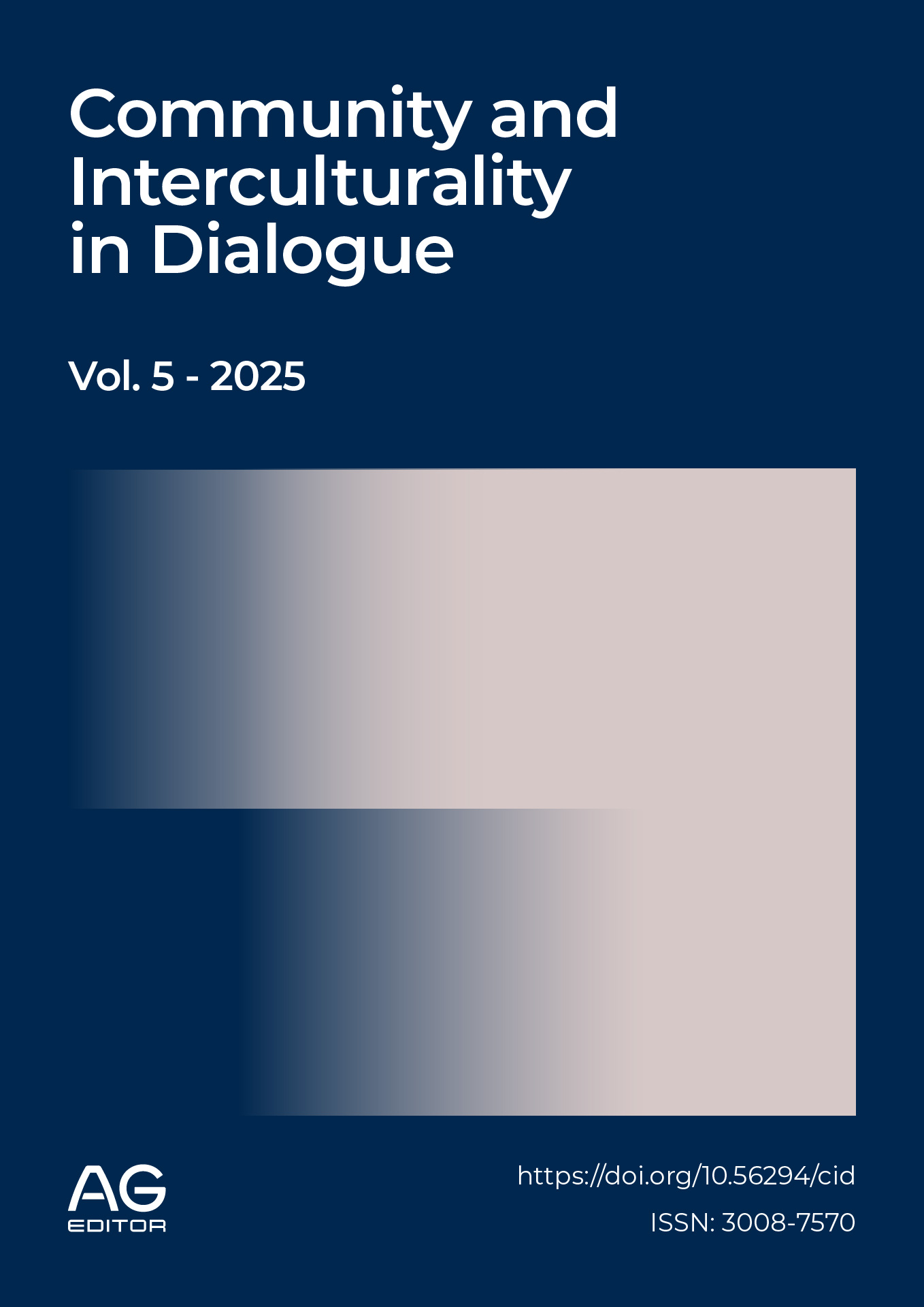Use of pain assessment scales in non-communicative patients
DOI:
https://doi.org/10.56294/cid2025154Keywords:
Pain Measurement, Nonverbal Communication, Critical Care, Nursing Services, Patient CareAbstract
Introduction: adequate pain management in non-communicative patients represents a critical challenge in healthcare. Globally, approximately 50 % of non-communicative critically ill patients experience pain during their stay in intensive care units. However, the use of validated scales such as the Behavioral Pain Scale (BPS) and the Critical-Care Pain Observation Tool (CPOT) remains limited. In Ecuador, 87 % of medical staff do not use scales to assess pain, resulting in 66 % of patients not receiving an adequate assessment and 92 % experiencing ineffective pain management.
Objective: to analyze the clinical utility and application of validated scales for the assessment of pain in non-communicative patients in hospital settings.
Method: a systematic review was conducted with a qualitative-descriptive approach, using the PRISMA methodology. Twenty-seven articles published between 2020 and 2025, in English and Spanish, located in scientific databases such as PubMed, Scopus, and Scielo, were included.
Results: the Behavioral Pain Scale (BPS), the Pain Indicator Behavior Scale (ESCID), PAINAD, CPOT, and NCS-R were the most frequently used. These tools were found to have good validity and reliability for detecting pain in non-communicative critically ill patients and were effective in procedures such as tracheal aspiration and mobilization. New technologies have also shown advances in the automation of pain diagnosis, although with limitations in standardization.
Conclusions: adequate pain assessment in non-communicative patients is possible through validated behavioral scales, whose clinical application requires ongoing professional training and adaptation to the patient’s context.
References
1. Afenigus AD. Evaluating pain in non-verbal critical care patients: a narrative review of the critical care pain observation tool and Its clinical applications. Frontiers in Pain Research. 2024 Oct 15;5:1481085. https://doi.org/10.3389/fpain.2024.1481085
2. Rivas Riveros E, Alarcón Pincheira M, Gatica Cartes V, Neupayante Leiva K, Schneider Valenzuela MB. Escalas de valoración de dolor en pacientes críticos no comunicativos: revisión sistemática. Enfermería: Cuidados Humanizados. 2019 Mar 27;7(1). https://doi.org/10.22235/ech.v7i1.1544
3. McGuire DB, Kaiser KS, Haisfield-Wolfe ME, Iyamu F. Pain Assessment in Noncommunicative Adult Palliative Care Patients. Nursing Clinics of North America. 2020 Sep 1;51(3):397–431. https://doi.org/10.1016/j.cnur.2016.05.009
4. Ferreira Teixeira JM, Cândida Durão M. Pain assessment in critically ill patients: an integrative literature review. Revista de Enfermagem Referência Journal of Nursing Referência. 2020;135–41. http://dx.doi.org/10.12707/RIV16026
5. Robleda-Font G, López-López C, Latorre-Marco I, Pozas-Peña J, Alonso-Crespo D, Vallés-Fructuoso O, et al. Adecuación de las escalas conductuales en la monitorización del dolor en el paciente crítico incapaz de autoinformar. Enferm Intensiva. 2024 Apr 1;35(2):e17–22. https://doi.org/10.1016/j.enfi.2023.12.004
6. Caldwell PHY, Bennett T. Easy guide to conducting a systematic review. J Paediatr Child Health. 2020 Jun 1;56(6):853–6. https://doi.org/10.1111/jpc.14853
7. Yepes-Nuñez JJ, Urrútia G, Romero-García M, Alonso-Fernández S. Declaración PRISMA 2020: una guía actualizada para la publicación de revisiones sistemáticas. Rev Esp Cardiol. 2021 Sep 1;74(9):790–9. https://doi.org/10.1016/j.recesp.2021.06.016
8. Piza Burgos ND, Amaiquema Márquez FA, Beltrán Baquerizo GE. Métodos y técnicas en la investigación cualitativa. Algunas precisiones necesarias. Conrado. 2020;15(70):455–9. http://scielo.sld.cu/scielo.php?script=sci_arttext&pid=S1990-86442019000500455&lng=es&nrm=iso&tlng=es
9. Latorre Marco I, Solís Muñoz M, Falero Ruiz T, Larrasquitu Sánchez A, Romay Pérez AB, Millán Santos I. Validación de la Escala de Conductas Indicadoras de Dolor para valorar el dolor en pacientes críticos, no comunicativos y sometidos a ventilación mecánica: resultados del proyecto ESCID. Enferm Intensiva. 2021 Jan 1;22(1):3–12. https://doi.org/10.1016/j.enfi.2010.09.005
10. Phillips ML, Kuruvilla V, Bailey M. Implementation of the Critical Care Pain Observation Tool increases the frequency of pain assessment for noncommunicative ICU patients. Australian Critical Care. 2019 Sep 1;32(5):367–72. https://doi.org/10.1016/j.aucc.2018.08.007
11. Vega-Hurtado C. Importancia de las estrategias de comunicación entre médico y paciente. Rev Med Inst Mex Seguro Soc. 2020;58(2):197–201. http://dx.doi.org/10.24875/RMIMSS.M20000017
12. Bellal M, Lelandais J, Chabin T, Heudron A, Gourmelon T, Bauduin P, et al. Calibration trial of an innovative medical device (NEVVA©) for the evaluation of pain in non-communicating patients in the intensive care unit. Front Med (Lausanne). 2024 Jun 27;11:1309720. https://doi.org/10.3389/fmed.2024.1309720
13. Emsden C, Schäfer UB, Denhaerynck K, Grossmann F, Frei IA, Kirsch M. Validating a pain assessment tool in heterogeneous ICU patients: Is it possible? Nurs Crit Care. 2020 Jan 1;25(1):8–15. https://doi.org/10.1111/nicc.12469
14. Waydhas C, Ull C, Cruciger O, Hamsen U, Schildhauer TA, Gaschler R, et al. Behavioral pain scale may not be reliable in awake non-verbal intensive care patients: a case control study. BMC Anesthesiol. 2024 Dec 1;24(1):1–6. https://doi.org/10.1186/s12871-024-02472-2
17 Defaz Defaz LM, et al
https://doi.org/10.56294/cid2025154
ISSN: 3008-7570
https://doi.org/10.56294/cid2025154
5. López-López C, Pérez-Pérez T, Beneit-Montesinos JV, García-Klepzig JL, Martinez-Ureta MV, Del Ara Murillo-Pérez M, et al. Pain assessment in mechanically ventilated, noncommunicative severe trauma patients. Journal of Trauma Nursing. 2020;25(1):49–59. https://doi.org/10.1097/JTN.0000000000000342
16. Latorre Marco I, Solís Muñoz M, Falero Ruiz T, Larrasquitu Sánchez A, Romay Pérez AB, Millán Santos I. Validación de la Escala de Conductas Indicadoras de Dolor para valorar el dolor en pacientes críticos, no comunicativos y sometidos a ventilación mecánica: resultados del proyecto ESCID. Enferm Intensiva. 2021 Jan 1;22(1):3–12. https://www.elsevier.es/es-revista-enfermeria-intensiva-142-articulo-validacion-escala-conductas-indicadoras-dolor-S1130239910001069
17. Via-Clavero G, Frade-Mera MJ, Alonso-Crespo D, Castanera-Duro A, Gil-Castillejos D, Vallés-Fructuoso O, et al. Future lines of research on pain care, sedation, restraints and delirium in the critically ill patient. Enfermería Intensiva (English Edition). 2021 Apr 1;32(2):57–61. https://www.elsevier.es/es-revista-enfermeria-intensiva-english-edition--430-articulo-future-lines-research-on-pain-S252998402100029X
18. López-De-Audícana-Jimenez-De-Aberasturi Y, Vallejo-De-La-Cueva A, Parraza-Diez N. Behavioral pain scales, vital signs, and pupilometry to pain assessment in the critically ill patient: A cross sectional study. Clin Neurol Neurosurg. 2024 Dec 1;247:108644. https://doi.org/10.1016/j.clineuro.2024.108644
19. Sen H, Vannella K, Wang Y, Chung JY, Kodati S. SARS-CoV-2 infects the eye, but surprisingly, inflammation absent in patients who died from COVID-19. Philadelphia. 2023;1(1). https://www.elsevier.com/about/press-releases/sars-cov-2-infects-ocular-tissue-but-surprisingly-inflammation-was-absent-in-the-yes-of-patients-who-died-from-covid19
20. Goldberg IA. Evaluación del dolor en pacientes adultos críticos. Argentinian Journal of Respiratory & Physical Therapy. 2024 Feb 29;6(1):49–51. https://doi.org/10.58172/ajrpt.v6i1.306
21. Colina Vargas YA, Vallejo Agudelo E, Rodríguez Polo A, Escobar Restrepo J, Posada Giraldo C, Joaqui Tapia WH. El dolor en pacientes hospitalizados en una institución de alta complejidad. Medicina UPB. 2022;41(2):114–20. https://doi.org/10.18566/medupb.v41n2.a04
22. Martín-Pérez S, Zárate-de Lupgens D, Carrillo-Pagés M, Gómez-Santaella JJ, Alonso-Pérez JL. Asociación de la intensidad del dolor y factores psicológicos entre pacientes con dolor lumbar crónico (DLC). Un estudio transversal correlacional. Iberoamerican Journal of Medicine. 2023 Nov 3;5(1):17–26. https://dx.doi.org/10.53986/ibjm.2023.0002
23. Robleda G, Roche-Campo F, Membrilla-Martínez L, Fernández-Lucio A, Villamor-Vázquez M, Merten A, et al. Evaluación del dolor durante la movilización y la aspiración endotraqueal en pacientes críticos. Med Intensiva. 2020 Mar 1;40(2):96–104. https://www.medintensiva.org/es-evaluacion-del-dolor-durante-movilizacion-articulo-S0210569115000741
24. Díaz Díaz J, Uriarte Méndez AE, Sánchez Acosta Z, Mora Pérez Y, Rodríguez Solís F. Validez y confiabilidad de las escalas para la valoración del dolor. Unidad de Cuidados Intensivos Pediátricos. Cienfuegos 2023. MediSur. 2024;22(3). http://scielo.sld.cu/scielo.php?script=sci_arttext&pid=S1727-897X2024000300430
25. Moreno-Palacios J, García-Delgado I, Casallo-Cerezo M, Gómez-González L, Cortina-Barranco M, Moreno-Martínez I. Estudio del dolor en los tratamientos de rehabilitación. Revista de la Sociedad Española del Dolor. 2020;27(6):361–8. https://dx.doi.org/10.20986/resed.2020.3809/2020
26. Robinson OC, Pini S, Flemming K, Campling N, Fallon M, Richards SH, et al. Exploration of pain assessment and management processes in oncology outpatient services with healthcare professionals: a qualitative study. BMJ Open. 2023 Dec 1;13(12):e078619. https://doi.org/10.1136/bmjopen-2023-078619
27. Rose L, Agar M, Burry LD, Campbell N, Clarke M, Lee J, et al. Development of core outcome sets for effectiveness trials of interventions to prevent and/or treat delirium (Del-COrS): study protocol. BMJ Open. 2020 Sep 1;7(9):e016371. https://doi.org/10.1136/bmjopen-2017-016371
28. Cantón-Habas V, Carrera-González MDP, Moreno-Casbas MT, Rich-Ruiz M. Spanish adaptation and validation of the Pain Assessment Scale in Advanced Dementia (PAINAD) in patients with dementia and impaired
Community and Interculturality in Dialogue. 2025; 5:154 18
ISSN: 3008-7570
verbal communication: cross-sectional study. BMJ Open. 2021 Jun 1;11(6):e049211. https://doi.org/10.1136/bmjopen-2021-049211
29. Yada H, Odachi R, Adachi K, Abe H, Yonemoto F, Fujiki T, et al. Validity and reliability of Psychiatric Nurse Self-Efficacy Scales: cross-sectional study. BMJ Open. 2022 Jan 1;12(1):e055922. https://doi.org/10.1136/bmjopen-2021-055922
30. Latorre-Marco I, Solís-Muñoz M, Acevedo-Nuevo M, Hernández-Sánchez ML, López-López C, Sánchez-Sánchez M del M, et al. Validation of the Behavioural Indicators of Pain Scale ESCID for pain assessment in non-communicative and mechanically ventilated critically ill patients: A research protocol. J Adv Nurs. 2020 Jan 1;72(1):205–16. https://doi.org/10.1111/jan.12808
31. Vaidya S, Friedner M. Discerning personhood through lena-dena: Disability professionals, ethics, and communication. Am Anthropol. 2024 Dec 1;126(4):647–57. https://doi.org/10.1111/aman.28023
32. Aijón Oliva MA. Grammatical Coding and the Discursive Construction of Participants: Spanish Passives in Written Press News Discourse. Transactions of the Philological Society. 2022 Nov 1;120(3):351–74. https://doi.org/10.1111/1467-968X.12247
33. López-López C, Robleda-Font G, Arranz-Esteban A, Pérez-Pérez T, Solís-Muñoz M, Sarabia-Cobo MC, et al. Development and psychometric validation of the Behavioral Indicators of Pain Scale-Brain Injury (ESCID-DC) for pain assessment in critically ill patients with acquired brain injury, unable to self-report and with artificial airway. Enfermería Intensiva (English ed). 2025 Apr 1;36(2):500523. https://doi.org/10.1016/j.enfie.2025.500523
34. Formisano R, Contrada M, Aloisi M, Ferri G, Schiattone S, Iosa M, et al. Nociception Coma Scale with personalized painful stimulation versus standard stimulus in non-communicative patients with disorders of consciousness. Neuropsychol Rehabil. 2020 Nov 25;30(10):1893–904. https://doi.org/10.1080/09602011.2019.1614464
35. Hsiung NH, Yang Y, Lee MS, Dalal K, Smith GD. Translation, adaptation, and validation of the behavioral pain scale and the critical-care pain observational tools in Taiwan. J Pain Res. 2016 Sep 15;9:661–9. https://doi.org/10.2147/JPR.S91036
36. Hashizume S, Nakano M, Ikehata C, Himuro N, Nagaishi K, Fujimiya M. Self-suppressing behavioral patterns and depressive traits exacerbate chronic pain: Psychological trait assessment using the structured association technique method. PLoS One. 2025 Mar 1;20(3):e0319647. https://doi.org/10.1371/journal.pone.0319647
37. Subramanian A, Cao R, Naeini EK, Aqajari SAH, Hughes TD, Calderon MD, et al. Multimodal Pain Recognition in Postoperative Patients: Machine Learning Approach. JMIR Form Res. 2025 Jan 27;9(1):e67969. https://doi.org/10.2196/67969
38. Pace AK, Bruceta M, Donovan J, Vaida SJ, Eckert JM. An Objective Pain Score for Chronic Pain Clinic Patients. Pain Res Manag. 2021 Jan 1;2021(1):6695741. https://doi.org/10.1155/2021/6695741
Published
Issue
Section
License
Copyright (c) 2025 Lisseth Monserrath Defaz Defaz, Keneth Josué Sisalema Bonito, Joselyn Nathaly Tituaña Saquinga, Lisbeth Paulina Torres Iza, Jeannette Mercedes Acosta Nuñez (Author)

This work is licensed under a Creative Commons Attribution 4.0 International License.
The article is distributed under the Creative Commons Attribution 4.0 License. Unless otherwise stated, associated published material is distributed under the same licence.






